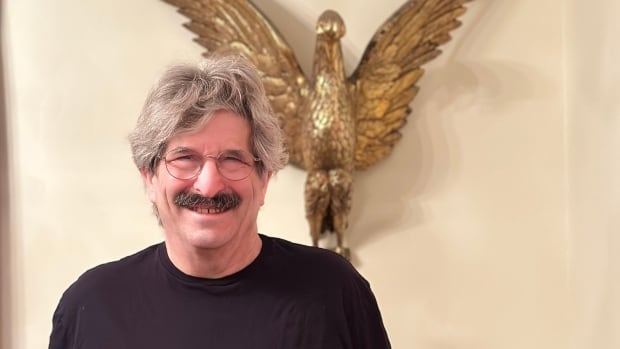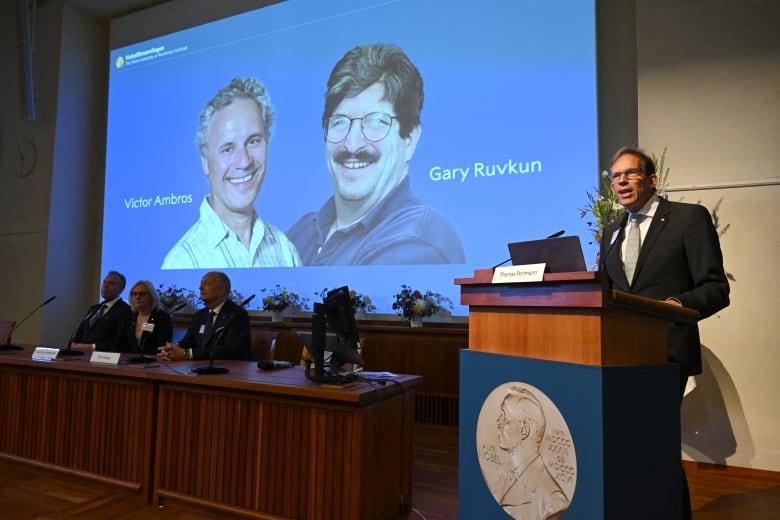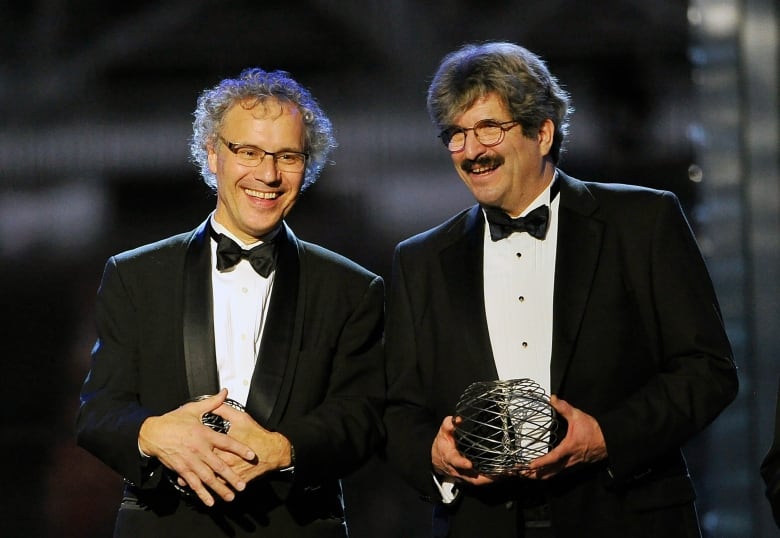
Quirks and Quarks10:29A Nobel prize for understanding how genes are turned on and off
Gary Ruvkun says microRNA, which are molecules that control how genes form our cells, could be the key to improving how humans fight diseases, and even finding extraterrestrial signs of life.
On Monday, the Nobel Prize in Medicine or Physiology was awarded to Ruvkun and his colleague Victor Ambros for their discovery in 1993 of a previously unrecognized group of molecules — dubbed microRNA — which help control which genes are active and when. This plays a vital role in how complex life forms grow and function.
Gary Ruvkun is a professor of genetics at Harvard Medical School. He spoke with Quirks & Quarks host Bob McDonald about his life-changing discovery, and how he hopes to use RNA to find life on other planets. Here is part of that conversation.
What was it like to get that call from Stockholm?
It’s been sort of in play for about 20 years. And so at four in the morning when the phone rings, it sort of took a minute to register, and my wife answered it and she said, “He has a Swedish accent!” Then it was like, “Oh!”
Tell me the story of how we started to understand how genes get turned on and off, [which] led to your work on microRNA.
So this emerged from doing genetic analysis in this little [worm called a] nematode. So the nematode is a big part of the ecosystem in soils, and it’s so simple, it has 959 cells and every cell has a name. So I started to work in 1982, as did Victor Ambros, and we worked together on the pedigree of cells that generates the animal.
How did that lead to the discovery of the role of microRNA?
When we figured out what these genes were, it turned out one of them encoded a product that was about five times smaller than any gene had ever been seen to be. It was only 25 nucleotides (the building blocks of RNA and DNA) long. And that was a new phenomenon, and it was considered kind of a quirk, and it wasn’t clear what it really meant.

When did you realize that this was a brand new genetic molecule?
This is early days. We didn’t have any genomes at this point but within five years, genomes were emerging. The way we figured out that [microRNA was present in the human genome] was we got a second one of these microRNAs, these very small genes, and that one had a human [equivalent], and got an answer by comparing the worm genome with its 25 letters, and there were those same 25 letters in the human genome.
What do these microRNAs actually do?
They regulate other target genes, and they do all kinds of different processes, and they are used in essentially every animal and every plant. So they’re as ancient as the divergence of plants and animals, which is, you know, a billion years ago. And have been implicated in, for example, the domestication of corn 5000 years ago.
These mutations are what the Indigenous peoples selected for. They didn’t know they were doing that, but they got what are called heterochronic mutants, mutants that do things differently when they’re developing. And that’s what makes bigger corn cobs.
I understand that more recently, you’ve been applying your knowledge for the search for microbial life outside of our solar system. Tell me about that.
Yeah, that’s been a passion. So we sort of dove into the richness of RNA biology, and there’s a long tradition of people trying to figure out how the ribosome works, for example.
And the ribosome is the tiny machine in all of our cells that takes messenger RNA and translates them into proteins, and it turns out that the key element of the ribosome is an RNA that probably existed before proteins even evolved.
That RNA is the most conserved thing on Earth, and it’s how biologists all over the world go to bizarre ecosystems like snow and ice, or ponds, or deep in the ocean, or human feces, you name it. You can look for who’s in there by looking for the DNA segments that are present in the ribosome.

And so I’ve been trying to convince NASA that that’s how they should look for life on Mars, and their response is always, “Well, yes, but that’s a very Earth centred view of looking for life. Are you stupid?” And my response is, it’d be stupid to not first look for that.
If you think that Mars is going to have independently evolved life, that’s stupid, because of course it’s going to spread between Earth and Mars. They’re right near each other, and there’s meteoritic exchange between the two. We have Martian meteorites on Earth, not a lot of them, but you don’t need a lot to have bacteria move between planetary systems.
Are there any future applications of microRNA research that you’re hoping to see?
Yeah. I mean, we’re going to continue to work on sort of, what are the pathways right now. One of the big things we do is we now know a lot about what are the proteins that are involved in presenting these tiny RNAs to their targets.
And we know that some of those proteins, they’re not present in humans or most of the animal kingdom, but the worm has them, ticks and spiders have them, coral has them, and these are the organisms that do antiviral defence way better than we do.
So we’re trying to figure out why so many of the animals like most insects, all of the vertebrates, essentially dumped their very ancient antiviral pathway to develop what’s called the interferon pathway, which is how we fight viruses. And my view is that we don’t do such a good job in comparison.